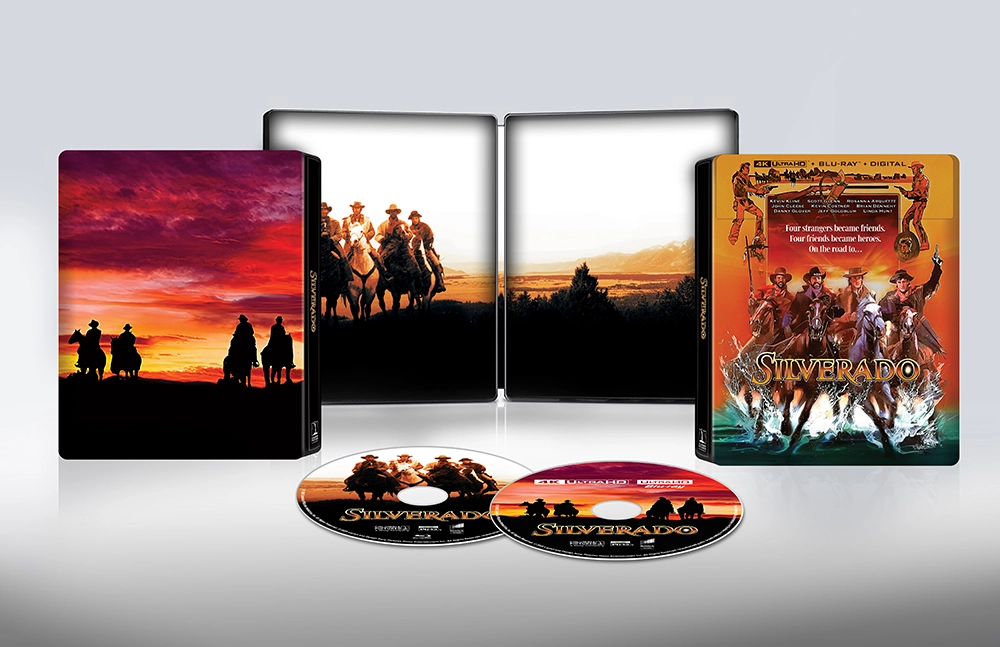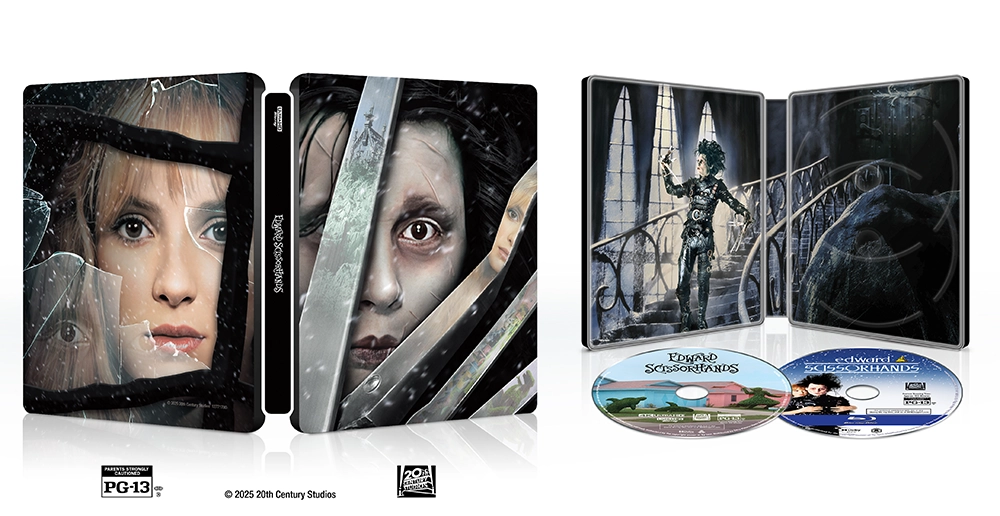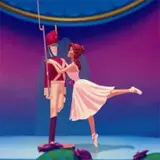 On a recent cold, rainy November night in Boston, dancing hippos, marching broomsticks and surreal images from the mind of Salvador Dali came to life at the Museum of Fine Arts.
On a recent cold, rainy November night in Boston, dancing hippos, marching broomsticks and surreal images from the mind of Salvador Dali came to life at the Museum of Fine Arts.
No, I did not imbibe in any sort of spirits at a local watering hole en route to the Museum. I was one of the attendees at a special presentation regarding the Blu-ray debut of Walt Disney’s 1940 classic Fantasia and its 2000 follow up, Fantasia 2000, which are now currently available and most likely sitting on many a fan’s shelf as you read this (and if it’s not, shame on you!). Hosted by longtime Disney team members Don Hahn (producer of Beauty and the Beast and The Lion King) and animation effects supervisor Dave Boussert (with a special appearance by Mickey Mouse himself), the two-hour presentation gave an overview of the film’s history, the efforts it took to restore the picture and a some background information on the projects and staff associated with the 1940 classic.
Several segments were shown from both films, played directly off of the Blu-ray edition. Beginning with The Sorcerer’s Apprentice and concluding with the breathtaking Firebird Suite, the images presented to those in attendance were nothing short of amazing. Among the interesting trivia bits offered up by the duo:
- Fantasia 2000 was funded by VHS sales of the original film
- Chasens, the restaurant where the idea of Fantasia was born, is now a supermarket
- The film negative is approximately three times the length of the actual film
- Don Hahn is currently working with Tim Burton on the stop-motion feature length version of Burton’s Frankenweenie!
Another special treat during the presentation was Destino, a project that Walt Disney and Salvador Dali began to collaborate on in the mid-40s but unfortunately had to shelve due to financial constraints. Several decades later, French director Dominique Monfrey teamed up with Disney studios to carry out and complete what was envisioned so long ago. The end result was a surrealistic delight, and the evening itself was a truly bright spot in an otherwise dark and dreary New England fall night.
I was fortunate enough to have a quick conversation with Don Hahn and Dave Bossert via phone the following morning, in which we discussed Fantasia, restoring film negatives and the Blu-ray format as well.
Let’s talk about the condition of the negative for Fantasia. This was a nitrate negative, correct?
DB: Yes. Fantasia was kind of a special situation. The live-action sequences were shot three-strip and the animation was shot six sets of exposure. For the most part, we were able to reconstruct the 120-minute film from the negative.
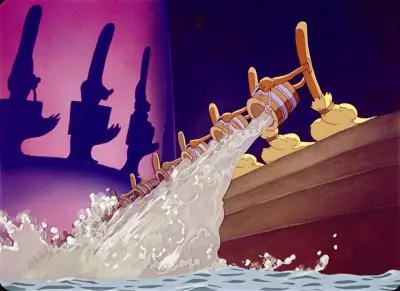
How long did the restoration process take on Fantasia?
DB: Somewhere between seven and eight months. We had to bring the negative, which is currently on loan to the Library of Congress and stored in Virginia, and return it back to Los Angeles in what we lovingly refer to as ‘The Ice Cream Truck;’ a refrigerated truck used to bring the negatives across the country. We don’t fly the negatives. Once it arrived in Los Angeles, the negative was fully inspected and cleaned and then put onto a film scanning machine at which point we did a 4K scan of every frame of the black-and-white negative.
What was the most difficult aspect of the restoration? Was it the sound or the picture?
DH: Each restoration we do poses its own set of challenges. What was unique about Fantasia was that we had so many segments and so many optical and animation techniques to deal with that some sequences were much dirtier and dustier than others. There was a real challenge going in and treating each sequence as a standalone and applying the different software solutions and digital cleanup techniques to it.
You’ve been working on the restorations for the Disney classics since 2004, correct?
DB: Correct. This new round of restorations on the Disney animated classic started in 2004 with Bambi (due on Blu-ray in March of 2011). Each one of these restorations and preservations are done by going back to the original negative.
Of the projects you have worked on, which one proved to be the most difficult?
DB: Each one of the projects has posed their own sets of challenges that we have had to create software solutions specifically for them. For example, on Dumbo since the large characters on screen were somewhat monochromatic in color, we had a lot of “color boiling” occurring. “Color boiling” is an artifact of the studio having its own paint lab and mixing its own paints. They mixed together pigment and binder, and certain pigment colors in the earth tone area of the palette. If you didn’t keep the paint mixed together well enough as you were applying it to the cell, the pigment and the binder would actually separate slightly and create a little bit of streaking. On a single cell, it wouldn’t appear as prevalent to the human eye. But when you see a sequence of those cells in motion, you can actually see total variations boiling around in the color. So we had to go in and create some software to mitigate that issue.
The Night on Bald Mountain sequence of Fantasia was a particularly challenge. There were a lot of optical passes that were done on the film, and many of the cells had dust, scratches and dirt on them. These were layered in because they were doing multiple passes on them on various scenes in the film.
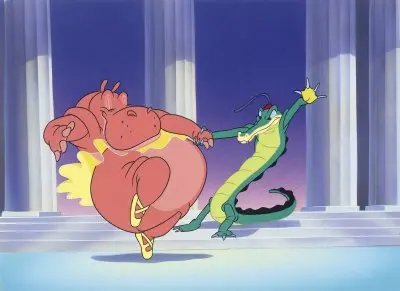
Did the recent Beauty and the Beast Blu-ray release require any major clean up?
DB: We got into a screening room with Don and the film’s directors Kirk Wise and Gary Trousdale and actually did a little restoration work on background artifacts. Beauty and the Beast was a bit of a transition film from painting on illustration board to painting digital backgrounds. In high definition, you can see texture of the boards on some of the backgrounds that were painted on illustration boards that had some items that needed cleaning.
DH: On Fantasia, the sound restoration was particularly difficult because most of the original masters for the audio were either lost or damaged. Most of the original masters from the recordings are gone, so all that was left were optical tracks that do a restoration from. The sound team on the project went in to restore the sound from that source as well as mix it for the 7.1 DTS track for Blu-ray.
As a film fan, it’s always sad to hear when the negative of a beloved classic has either deteriorated to the point of not being able to save or is close to that point.
DB: True. Disney, however, has taken a lot of great care with the nitrate negatives and one of the reasons why the studio has put them on loan with the Library of Congress is that they have a state of the art film facility in Virginia. The negatives are being kept in ventilated cans and climate-controlled vaults, inspected on a regular basis. What we are trying to do is prolong the life of the negative as long as we possibly can, but due to the natural chemical breakdown inherent in the film stock, the negatives will eventually turn to dust which is something we really can’t do much about. With the preservation and restoration program we are currently doing, we can hopefully preserve these films for eternity. Once we do the 4K scans and the full digital restoration of all the imagery frame by frame, we are laying out a new negative on safety stock. We are also keeping a record of the original nitrate negative in 4K as well.
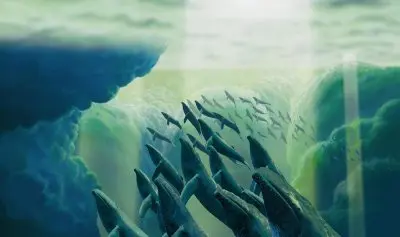
In regards to the animated short Destino, which is included on this Blu-ray edition, how much of the short needed to be completed?
BD: Dominique Monfrey (the director of the short film) had about 120 panels of the story to begin with. We also had John Hench, the Disney animator who collaborated with Salvador Dali on the project back in 1946, assisting with the project (he is credited as a co-writer). Dominique went off and did a tremendous amount of research, looking at Dali’s painting style and drew off from Dali’s body of work to complete this project.
Will Musicana ever become a reality?
DH: While there is renewed interest in aspects of Musicana, there are currently no plans to start up the project again at this time.
Disney is a big Blu-ray supporter. What do you see as the biggest strength and, if there is one, weakness of the format?
DH: Well, quality and image is obviously its greatest strength. Fantasia on Blu-ray probably looks and sounds better than most of the theatrical releases of the film over the years. The depth of the supplemental material that the format can offer whether it be on the actual disc or via a BD-Live connection, is also great.
If there is a drawback, I would have to say that its greatest strength might also be its greatest drawback! That would only be because the clarity and quality of a Blu-ray presentation really shows everything. A good example would be Bambi. We were recently reviewing the 2004 restoration and notice some additional artifacts in the image. So now, we are going back to do another “beauty pass” on an already beautiful restoration.
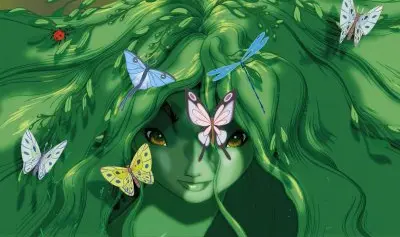
When is Dumbo coming to North America on Blu-ray?
Dumbo could be coming to the North American market in 2011. (editor’s note: Look for Dumbo this upcoming spring)
Gentlemen, it was a pleasure speaking with you. Congratulations on all the great work you have done so far.
DB & DH: It was a pleasure. Thank you!
Fantasia and Fantasia 2000 in a four-disc set are currently available for purchase on Blu-ray. Check out my Fantasia Blu-ray here. Our sincere thanks to Don Hahn, Dave Bossert and Walt Disney Home Video for not only taking the time to talk with us, but also for all the great work they are doing on the preservation and restoration of their classic films.
– Shawn Fitzgerald

